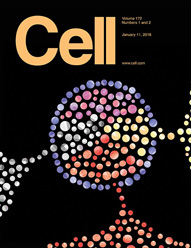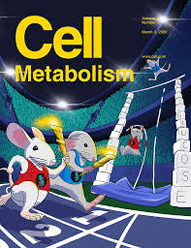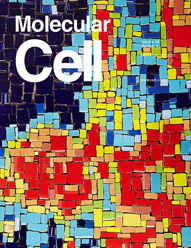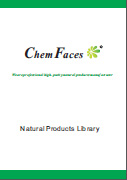| In vitro: |
| Drug Des Devel Ther. 2017 Aug 22;11:2431-2441. | | Sensitization of gastric cancer cells to alkylating agents by glaucocalyxin B via cell cycle arrest and enhanced cell death.[Pubmed: 28860714] | Severe side effects are major problems with chemotherapy of gastric cancer (GC). These side effects can be reduced by using sensitizing agents in combination with therapeutic drugs.
METHODS AND RESULTS:
In this study, the low/nontoxic dosage of Glaucocalyxin B (GLB) was used with other DNA linker agents mitomycin C (MMC), cisplatin (DDP), or cyclophosphamide (CTX) to treat GC cells. Combined effectiveness of GLB with drugs was determined by proliferation assay. The molecular mechanisms associated with cell proliferation, migration, invasion, cell cycle, DNA repair/replication, apoptosis, and autophagy were investigated by immunoblotting for key proteins involved. Cell cycle and apoptosis analysis were performed by flow cytometry. Reactive oxygen species level was also examined for identification of its role in apoptosis. Proliferation assay revealed that the addition of 5 μM GLB significantly sensitizes gastric cancer SGC-7901 cells to MMC, DDP, and CTX by decreasing half-maximal inhibitory concentration (IC50) by up to 75.40%±5%, 45.10%±5%, and 52.10%±5%, respectively. GLB + drugs decreased the expression level of proteins involved in proliferation and migration, suggesting the anticancer potential of GLB + drugs. GLB + MMC, GLB + CTX, and GLB + DDP arrest the cells in G0/G1 and G1/S phase, respectively, which may be the consequence of significant decrease in the level of enzymes responsible for DNA replication and telomerase shortening.
CONCLUSIONS:
Combined use of GLB with these drugs also induces DNA damage and apoptosis by activating caspase/PARP pathways and increased production of reactive oxygen species and increased autophagy in GC cells. GLB dosage sensitizes GC cells to the alkylating agents via arresting the cell cycle and enhancing cell death. This is of significant therapeutic importance in the reduction of side effects associated with these drugs. | | J Pharmacol Sci. 2015 May;128(1):35-46. | | Anti-inflammatory effects of glaucocalyxin B in microglia cells.[Pubmed: 26003084] | Over-activated microglia is involved in various kinds of neurodegenerative process including Parkinson, Alzheimer and HIV dementia. Suppression of microglial over activation has emerged as a novel strategy for treatment of neuroinflammation-based neurodegeneration.
METHODS AND RESULTS:
In the current study, anti-inflammatory and neuroprotective effects of the ent-kauranoid diterpenoids, which were isolated from the aerial parts of Rabdosia japonica (Burm. f.) var. glaucocalyx (Maxim.) Hara, were investigated in cultured microglia cells. Glaucocalyxin B (GLB), one of five ent-kauranoid diterpenoids, significantly decreased the generation of nitric oxide (NO), tumor necrosis factor (TNF)-α, interleukin (IL)-1β, cyclooxygenase (COX)-2 and inducible nitric oxide synthase (iNOS) in the lipopolysaccharide (LPS)-activated microglia cells. In addition, GLB inhibited activation of nuclear factor-κB (NF-κB), p38 mitogen-activated protein kinase (MAPK) and generation of reactive oxygen species (ROS) in LPS-activated microglia cells. Furthermore, GLB strongly induced the expression of heme oxygenase (HO)-1 in BV-2 microglia cells. Finally, GLB exhibited neuroprotective effect by preventing over-activated microglia induced neurotoxicity in a microglia/neuron co-culture model.
CONCLUSIONS:
Taken together, the present study demonstrated that the GLB possesses anti-nueroinflammatory activity, and might serve as a potential therapeutic agent for treating neuroinflammatory diseases. |
|

 Cell. 2018 Jan 11;172(1-2):249-261.e12. doi: 10.1016/j.cell.2017.12.019.IF=36.216(2019)
Cell. 2018 Jan 11;172(1-2):249-261.e12. doi: 10.1016/j.cell.2017.12.019.IF=36.216(2019) Cell Metab. 2020 Mar 3;31(3):534-548.e5. doi: 10.1016/j.cmet.2020.01.002.IF=22.415(2019)
Cell Metab. 2020 Mar 3;31(3):534-548.e5. doi: 10.1016/j.cmet.2020.01.002.IF=22.415(2019) Mol Cell. 2017 Nov 16;68(4):673-685.e6. doi: 10.1016/j.molcel.2017.10.022.IF=14.548(2019)
Mol Cell. 2017 Nov 16;68(4):673-685.e6. doi: 10.1016/j.molcel.2017.10.022.IF=14.548(2019)

